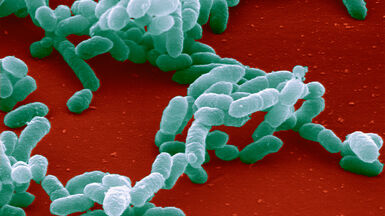Joint opinion ECDC/EFSA reviewing the latest scientific evidence on possible links between TSEs in animals and humansArchived
The European Food Safety Authority (EFSA) and ECDC have published a joint opinion providing an overview of the latest available scientific information on possible links between Transmissible Spongiform Encephalopathies (TSEs) in animals and humans. This is the first comprehensive review of epidemiological and laboratory studies on possible links between TSEs in animals and humans at EU level.
The European Food Safety Authority (EFSA) and ECDC have published a joint opinion providing an overview of the latest available scientific information on possible links between Transmissible Spongiform Encephalopathies (TSEs) in animals and humans. This is the first comprehensive review of epidemiological and laboratory studies on possible links between TSEs in animals and humans at EU level.
The findings in the opinion confirm that at present the only TSE proven to be zoonotic (i.e. transmissible from animals to humans), remains Classical Bovine Spongiform Encephalopathy (BSE), which transmits to humans as variant Creutzfeldt-Jakob disease (vCJD). Epidemiological evidence shows that the most common form of TSE in humans is sporadic Creutzfeldt-Jakob disease (sCJD). While scientific research to date has not identified an environmental source of infection, the Panel could not exclude the possibility that a small number of cases could be zoonotic. Regarding Classical scrapie in goats and sheep, no epidemiological evidence suggests it is zoonotic; whereas for Atypical scrapie in sheep and goats, the scientific data currently available are too limited to conclude whether it has the potential to be zoonotic or not. For other TSEs, a number of uncertainties make it impossible at present to draw definite conclusions on possible links between animals and humans. One of the reasons for this is that data on the monitoring of TSEs in animals are too recent to be compared to the respective human data as the incubation period in humans could be many years. The opinion therefore recommends that systematic monitoring of TSE diseases be continued in both humans and animals.
In addition to epidemiological data, the scientists also evaluated evidence obtained from experimental transmission of TSEs in laboratory studies. The opinion states that the results of some of these studies suggest there might be a possibility of animal-to-human transfer for other TSEs, in addition to Classical BSE in cattle. In particular, some data indicate that one of the new atypical BSE agents, the L-BSE or BASE agent, may have a similar or higher zoonotic potential than the Classical BSE agent. How the infection with the BASE agent would be expressed in humans is not known and thus, would require sensitive surveillance system to detect potential new forms of TSEs in humans. The opinion however points out that at present it is not possible to define how informative these laboratory studies are for measuring the transfer of TSEs between animals and humans under real exposure conditions.
Read the joint opinion







